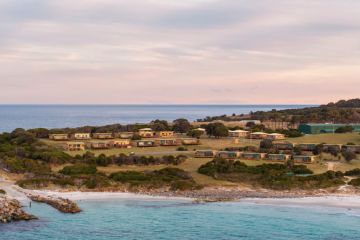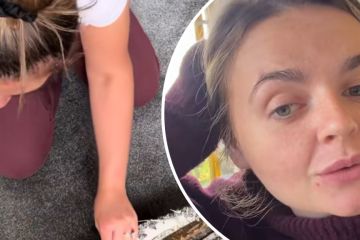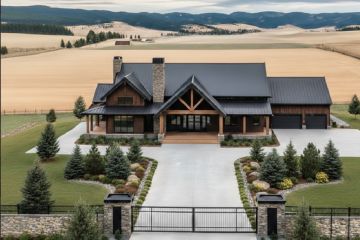Post-Black Saturday, new houses are being built on Kinglake's old street grid
No one who was there that day – February 7, 2009 – no one who lost family, friends, neighbours, stock or property at Kinglake will ever forget.
But as the biblical horror of Black Saturday recedes and as the mountain township rebuilds itself as a town of new houses on an old street grid, there is a palpable sense of regeneration.
Aside from the charcoal-coloured trunks and the bare limbs of burned branches that poke above the virulent new eucalypt canopy, and in this season, the golden wattle blossom, you almost wouldn’t know that the worst had happened here.
Here, where about 20 per cent of the population left, including some of the 500-plus households who lost their shelter in and around Kinglake during Australia’s worst ever bushfire disaster, local realtor for Mason White McDougall, Donna Wilson, says a generational change is in progress.
“In the last two years – especially the past 12 months – there is an increase in inquiry about property. Nothing stays on the market for long.”
And whereas such rising interest in affordable property usually indicates an active first-home buyer demographic, at Kinglake, she says, it is just families.
With the popular style of property being a four bedroom, two living room home on a 2000-square metre block (“with a shed”) priced between $450,000 and $600,000, “the feedback we’re getting seems to be about both affordability and having more (outdoor) space than is available in the suburbs”.
- Related: Novel approach to rebuilding post-fire
- Related: High hopes for Black Saturday survivors
- Related: New homes for Black Saturday survivors
This is a stock profile viable for a single income family where the breadwinner commutes either to the city, 56 kilometres away, or to the industrial corridors of Campbellfield or Bayswater, about an hour away by car.
“There is no work, or very limited work, available on the mountain,” according to Ross Laudisio, proprietor of the second version of his family’s Italian cafe, Capparossi, across the main street of Kinglake Central from where his first cafe burned down in 2009. Tragically, his father was one among the 159 lives lost in the Kinglake-Marysville disaster.
“It’s a different town now,” he says. “Most of the houses are new and there’s been a turnover of people. Those who couldn’t handle it moved off the mountain and new people have moved up.”
Due to the extraordinary caution inherent in Murrindindi Shire’s bushfire overlays — which have helped a rare housing subdivision at Pheasant Creek sell 12 of the 13 five-acre allotments for between $340,000 and $380,000 — there will be a tacit limit to housing growth in the area.
That should also make some of the other land parcels Mason White McDougall has coming up for the spring market fairly attractive. Ms Wilson tells of a four acre block that was burned out during Black Saturday “but still has a self-contained studio on it” for $350,000, as very desirable.
Another pending property coming to market is a Western red cedar house in a bush setting between two creeks, “with that timbered feel of old style Kinglake”, that could incite interest at $850,000. “It’s beautiful,” she says. “All it needs is a new kitchen.”
Gregg Bebbington, who has raised a beautiful, comfortable and individual stone, Colorbond and ply-clad home on the block where his old house stood before being razed on Black Saturday, says “leaving Kinglake never occurred to me”.
“What are you going to do? Go somewhere else and buy another block of land?”
His family’s new dwelling stands out among the huge variety of building styles that have reappeared on Kinglake Central’s old subdivisions. “It was not the earliest out of the ground”, but it is one of the most stylish in the mountain township.
The retired building designer and acolyte of the Eltham bush school of building design is a little disappointed that so many of the other replacement houses are “so bland”. But he understands how it happened – “because people wanted to get them up so quickly”.
“It all reflects different tastes,” he says, philosophically.
It all reflects a changed but resilient township. “It’s all different,” Mr Laudisio says. “But it’s coming back to life. The bush is coming back to life. In another 10 years you won’t even know that the fire happened.”
We recommend
We thought you might like
States
Capital Cities
Capital Cities - Rentals
Popular Areas
Allhomes
More







